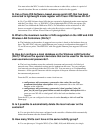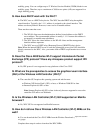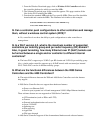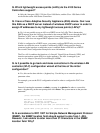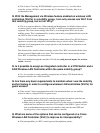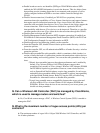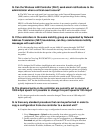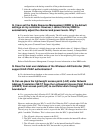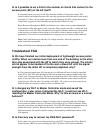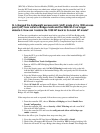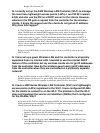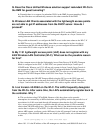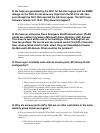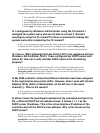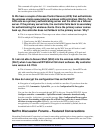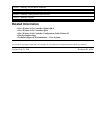Q. Does the Cisco Unified Wireless solution support redundant WLCs in
the DMZ for guest tunneling?
A. Presently there is no support for redundant WLCs in the DMZ for guest tunneling. This is
why the client does not automatically connect to the other controller in the DMZ.
Q. Wireless LAN Clients associated with the lightweight access points
are not able to get IP addresses from the DHCP server. How do I
proceed?
A. The common reason for this problem might be that the WLC and the DHCP server reside
on different subnets. The WLC does not do routing and it depends on a Layer 3 device for
routing between these different subnets.
The possible workaround is to configure the DHCP server on the same subnet as the WLC. If
the DHCP server is on a different subnet, then either a router must be in place in order to
route between the WLAN and the DHCP server or you can configure the internal DHCP
server on the WLC with a scope for the WLAN.
Q. My 1131 lightweight access point (LAP) does not register with my
4402 Wireless LAN Controller (WLC). What can be the possible reason
for this?
A. One common reason is that the Lightweight Access Point Protocol (LWAPP) Transport
Mode is configured on the WLC. A 4402 WLC can operate in both Layer 2 and Layer 3
LWAPP mode. Whereas, an 1131 LAP can only operate in Layer 3 mode. Layer 2 mode is
not supported on the 1131 LAP. So, if the WLC is configured with the LWAPP Transport
Mode of Layer 2, then your LAP does not join the WLC. In order to overcome this problem,
change the LWAPP Transport Mode of the WLC from Layer 2 to Layer 3.
In order to change the LWAPP Transport Mode using the GUI, go to the WLC page and
locate the second selection in the main field which is LWAPP Transport Mode. Change this
to Layer 3 and reboot the controller. Now, your LAP is able to register with the controller.
Q. I run Version 4.0.206.0 on the WLC. The LAPs frequently deregister
from the WLCs. After some time, the LAPs automatically register back to
the controller. Why ?
A. This can be due to bug CSCsh50966. Because of this bug, there can be sporadic
interruptions in connectivity at ARP refresh time, which possibly result in the periodic loss of
associations for LAPs associated through AP managers other than the first (AP−manager).
Also, access points associated to a controller that run software release 4.0.206 sometimes
reboot when LWAPP traffic drops. This is especially likely if the default router runs an IOS
version that is subject to CSCec40253. Use this workaround. On the system that issues the
unicast ARP request, configure a static ARP entry for the AP−manager2 (and up) interface(s).
For example, if the deficient ARP unicasts are issued by an IOS router, use a command such
as this
router(config)#arp 10.1.1.1 0000.0102.abcd arpa
where 10.1.1.1 is the IP address of the AP−manager<n> interface, and 0000.0102.abcd is its



